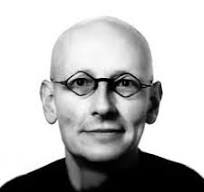Paul Gofferjé
Documents from [1988] to [1992]Identity Statement
4 positives, 2 posters, 60 5-inch transparency slides, 5-inch color negatives, 60 ‘stitched’ slides, 13 CD-ROMS, 1 ScreenSaver, 1 Book and 54 pictures in digital format
Negative, Paper, Positive, Slide
Alonso Fernandez, Juan; Pandrea, Petru Ioan
Context
Paul Gofferjé was born on August 21, 1955, in Sydney, Australia. He received his education at the School of Visual Arts in New York and the Vrije Academie in The Hague. He further honed his skills in CPDB audiovisual. In 1980, Trudy Nijman and Paul Gofferjé founded the Art Photographic company. Later, he co-founded GameChangersStudio, where he acted as a Social Design consultant, developing educational models for artists and designers. Gofferjé has contributed significantly as a photographer and artist to projects such as 'Station tot Station'. In 1990, Paul Gofferjé and Trudy Nijman launched a photographic project, funded by the European Commission, to commemorate the unification of Europe. Their goal was to capture images of five historically and culturally significant bridges in each of the 12 EU member countries. The project resulted in the creation of a panoramic photograph named 'Bridge over Europe 1992,' which symbolises European unity.
The material for Bridges over Europe (BOE) was previously stored in the personal archive of its creator and owner, Paul Gofferjé, in Amsterdam. This material was later deposited at the Historical Archives of the European Union (HAEU) by Gofferjé, under the terms of a deposit contract signed on 6 November 2023 between Paul Gofferjé and the HAEU, represented by its Director, Dieter Schlenker.
Content and Structure
The fonds is composed of part of the material from the photograpic project "Bridge over Europe". These images, captured from 1988 to 1992, showcase a selection of five bridges from each European Union member state of that time: Greece, Italy, Spain, Portugal, France, Belgium, Luxembourg, Germany, Denmark, the Netherlands, the United Kingdom (England), and Ireland. The bridges chosen for their metaphorical significance were considered apt representations of the continent's unification. This choice later found resonance through The European Commission which recognized the project's importance, providing financial support and a dedicated space at the 1992 World Expo in Sevilla. The fonds also includes 54 pictures of the making off from the 12 countries. The project, executed with collaboration from volunteers, sponsors, historians, and digital specialists, faced technical challenges. A list of 100 bridges, carefully selected by historians, served as the basis for the photographic journey. The Swiss 5-inch Seitz panorama camera, renowned for its quality, was employed, along with Kodak EPP chrome film. The three-month journey spanned over 100 bridge locations across Europe. Creating a seamless panorama from 60 selected shots required meticulous effort. Digital specialists, supported by students, worked to eliminate visible joints, resulting in the final image— 'Bridge over Europe.' Printing the 75-meter panorama on Ilford Transparency material required specialized machines. The project's impact was evident at the Expo 1992 Sevilla, where the European Commission showcased the 75-meter panorama in a dedicated pavilion. Subsequent exhibitions at the Westergasfabriek in Amsterdam and JFK Airport in New York continued to amplify the project’s reach. A high-definition version was also presented at the Tuschinski Theatre during the Dutch Film Festival. Beyond exhibitions, the project garnered media attention, with articles detailing its intricacies. A book chronicling the history of each bridge captured in the panorama added a comprehensive dimension. As a Historical Statement, the project "Bridge over Europe 1992" stands as a testament to the vision of Gofferje and Nijman. The legacy lives on, not in grandiose symbolism, but in the tangible connections between the bridges that once symbolized unity across a diverse European landscape.
The photographic material has been classified according to its original production order and respecting the photographers' classification. The collection is divided into three series: original images, stitched images, and making-off pictures. The dossiers in the original and stitched series refer to each country, resulting in a total of 12 countries. The countries included in this list are Greece, Italy, Spain, Portugal, France, Belgium, Luxembourg, Germany, Denmark, The Netherlands, The United Kingdom (England) and Ireland.
Conditions of Access and Use
The documents are open to the public.
Academic use and reproduction of the documents may be authorized in accordance with the rules in force at the Historical Archives of the European Union (HAEU). The HAEU cannot authorize commercial use of the documents. In case of a request with commercial intentions, the HAEU will facilitate communication between the requesters and the depositor, Mr. Paul Gofferjé, who owns the rights to the materials in this collection. More about copyright
English
Photograph, Poster, Textual
